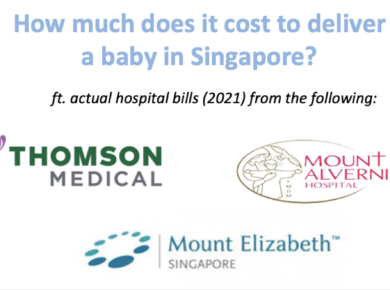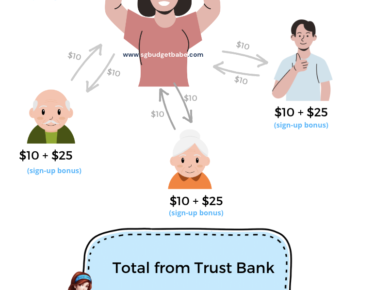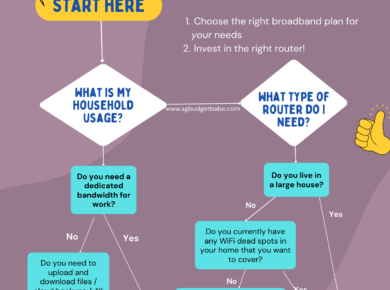You’ve planned to be financially free by age X. But what happens if your income takes a sudden hit and derails your financial plans?
With more people having lost their jobs or facing retrenchment (due to the pandemic dragging on for far longer than expected), you’ll need a plan on what to do if your employment situation changes as well. And lest you think that retrenchments only happen to people in their 40s or 50s, think again. Many young professionals in their 20s were retrenched last year, and it even happened to a colleague of mine, who is in his early 30s.
I feel really upset each time readers message me for help on what they can do when they’ve been laid off. This is why I’ve stressed time and time again that it is crucial for one to build additional income sources on the side, such as through a side hustle or investments.
If you’re among those who have been retrenched, here’s what you can do:

1. Learn about retrenchment measures (and benefits)
Is it a retrenchment?
According to the Employment Act, retrenchment is the termination of employees due to redundancy or reorganisation of the employer’s profession, business, trade or work. This includes situations where companies undergo liquidation, receivership or judicial management.
If your employer is undergoing a cost-saving exercise such as salary or work adjustments to tide over the period of business uncertainty, this should be properly communicated to you and your colleagues. If there are changes to the terms and conditions of your employment, consent must be sought. If there is no agreement, either party can terminate the employment and it is not considered as a retrenchment.
If you have questions on your salary and leave arrangements, you should first clarify with your supervisor or HR representative. If you need to seek further advice on cost savings measures by your employer, you can check out the LifeSG app for some guidelines, or contact MOM or the Tripartite Alliance for Dispute Management (TADM).
Under the Employment Act, your employer is not allowed to terminate you immediately – there is a minimum notice period that they have to give you, even for retrenchments.
Otherwise, they will need to pay you salary in lieu of notice, the amount equivalent to your pay for the notice period. When my company retrenched my ex-colleague and sent him packing on the day itself, he received 2 months of his pay as notice-in-lieu.
Check the guidelines to potential retrenchment benefit.
If you’ve worked for your employer for 2 years or longer, you may be eligible for retrenchment benefit. The retrenchment benefit depends on what is provided for in your employment contract (or collective agreement for unionised companies). If there is no provision, you should check with your HR or employer.
For the ladies, if you’ve worked for your employer for at least 3 months before you were retrenched (or dismissed) while pregnant, your employer must still pay your maternity benefits.
Depending on your case details, you can either file a claim at TADM or report to MOM for assistance. Understand more about this process via the guide on your LifeSG app.

2. Start looking for new job opportunities
For most of us, going for an extended period of time without income can take a toll on our finances. It not only depletes our emergency funds, but also leaves us vulnerable to many decisions or choices that could otherwise be solved if we had money. The emotional impact can also be draining – many retrenched individuals tend to feel like the setback means they’ll be judged by future employers for it for the rest of their career and life.
The first step is to recognize that it isn’t about you, this decision was about your employer. While companies are encouraged to retain their workers and consider alternatives to retrenchment, such as redeployment, shorter work weeks or asking employees to take up to 50% of their earned annual leave (as a temporary layoff, and no more than 1 month), some companies may have no choice to cut costs further, and unfortunately, you don’t get a say in whether to keep your job since such company-level decisions are out of your control. But take heart: one career setback doesn’t mean it’s the end.
The good news is, because of the pandemic, society and many employers are more welcoming towards the retrenched, given that even the younger workers and highly-qualified (even Masters degree-holders) are becoming victims of global cost-cutting and retrenchment exercises. The stigma that often comes with being retrenched is no longer something for you to be ashamed of.
The second step is to think about how and where you can contribute value to your next job. Your portfolio, experience and strengths are not taken away from you. You can bring this, together with fortitude and resilience (that only a retrenched person can show), into your next role or job application.
The LifeSG app comes in handy for this – you can look for job opportunities, view salary information for the role on MyCareersFuture before you apply, and even apply for SGUnited Mid-Career Pathways (a company attachment to gain industry-relevant skills while you receive a training allowance).
Almost half of the roles are government-funded or heavily subsidised attachment opportunities, or even hiring that are being brought forward by public sector agencies. It’ll also connect you to the network of over 20 SGUnited Jobs and Skills Centres, which can be found in most community clubs.



The Singapore government has been doing a lot to help the unemployed and retrenched during these times, and before you dismiss these entirely, you may want to note that the initiatives were so successful that it helped over 25,000 jobseekers find new jobs, of which 6 in 10 were PMETs.
So, do yourself a favour and try it too.
3. Consider upskilling yourself.
If even the employed are voluntarily going for courses to upskill themselves, then what is stopping you?
We should never rest on our laurels – the workers who will continue to be highly valued by employers in these disruptive times are those who continuously upgrade and upskill themselves to ensure they remain relevant even with all the technological changes happening.
If you no longer have to report for a 9-5 job, then why not take advantage of this extra time you now have to transform yourself into a more attractive candidate for prospective employers?
You’d want to stand out from other candidates – both fresh graduates and newly-retrenched – who are likely also applying for the same roles that you are.
If you had been thinking that you’ll find a replacement job quickly… think again. In this economic climate, even those with a masters degree are struggling despite 300+ job applications and over a decade of experience.

One resource you can check out is the SkillsFuture for Digital Workplace initiative via the LifeSG app – a 2-day programme that helps you to become digital-ready for the future work environment. Alternatively, if you prefer to get a monthly training allowance while upskilling yourself, check out the SGUnited Skills page instead. There are also dedicated courses for you to pick up more specialist skills such as data analytics, cyber security and more under the SkillsFuture Series.
P.S. You can check how much SkillsFuture credits are available on your LifeSG app!

4. How about making a career switch?
If you were in a sunset industry, now may be a good time to switch to a growth industry instead that will secure your employment prospects for the future.
Companies that are growing continue to hire more workers, while declining industries are conducting more layoffs over the years.

Thinking of joining the tech industry? Check out the Tech Immersion and Placement Programme, which helps you apply for immersive training programmes in artificial intelligence, data science, UX design, digital marketing and more. Otherwise, you can also apply for the TeSA Mid-Career Advance for Singaporeans aged 40 and above to reskill or upskill for in-demand areas such as data analytics, project management, software development and more.

If you’re not keen on tech, there are also other growth industries such as pharmaceuticals or healthcare, and you can apply for these via the Professional Conversion Programme, which helps mid-career workers to get skills training and work attachments before you move into new jobs or sectors. My relative (a former pilates instructor), for instance, made use of this programme to switch to becoming a physiotherapist and is currently undergoing training for it right now.

If you’ll like to find more resources like these, be sure to open your LifeSG app to learn about the various resources available that you can tap on for your job search, employment benefits and more.
I’ve been using the app a lot ever since it was launched last year (see my previous post here), and in recent months, I noticed that GovTech has been hard at work improving and adding more features to the app.
For instance, I can now track how much SingapoRediscovers Vouchers I have left on the app, and found out that I can now top up baby #2’s CDA later this year to $6,000 as the government has doubled their co-matching for the second child born after 1 January 2021!

Ok, I digressed.
Thanks to the new employment support modules that have been launched on the LifeSG app, retrenched workers or jobseekers can now quickly know what help is available for them, and get directed to job opportunities.
There’s no reason why you shouldn’t tap on all these government programmes and more in your job search; it might even help you get employed faster.
Download the LifeSG app today.
You can also do a lot more on the LifeSG app, which is a one-stop portal to (almost) all the government services that you need. So if you’ve yet to download it, be sure to do so today.
This post is written in collaboration with Workforce Singapore. All opinions are that of my own.





